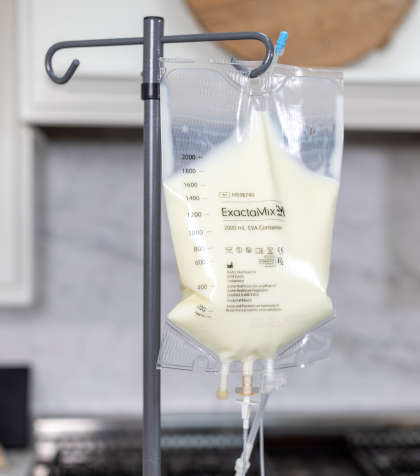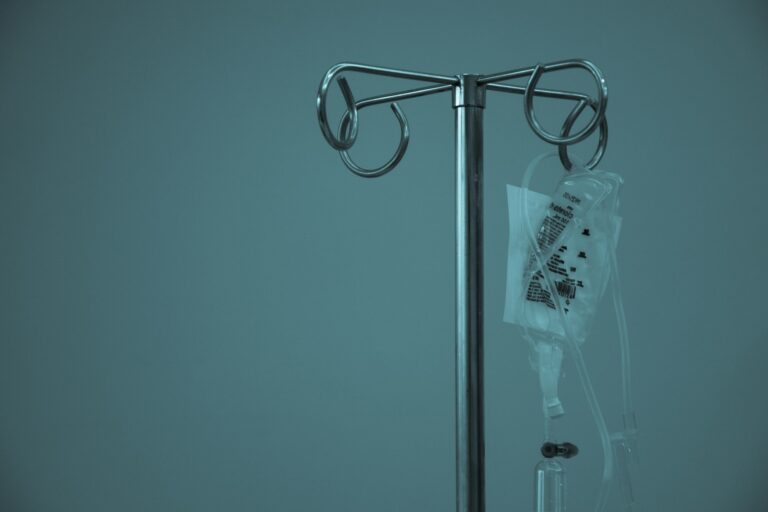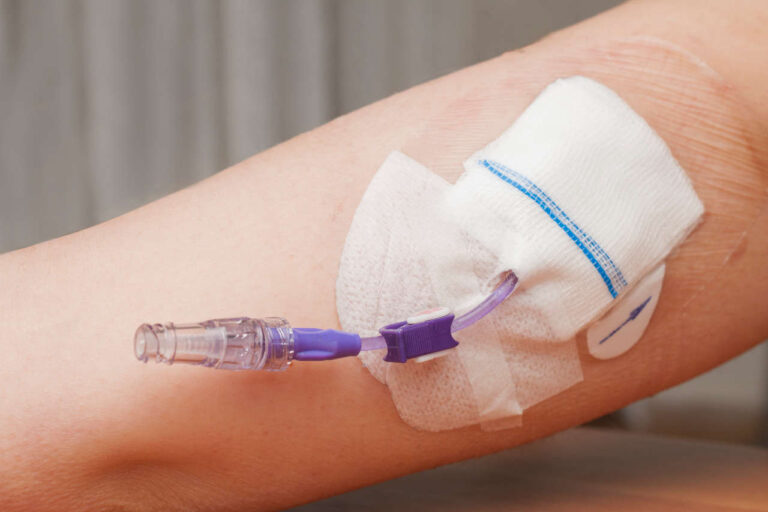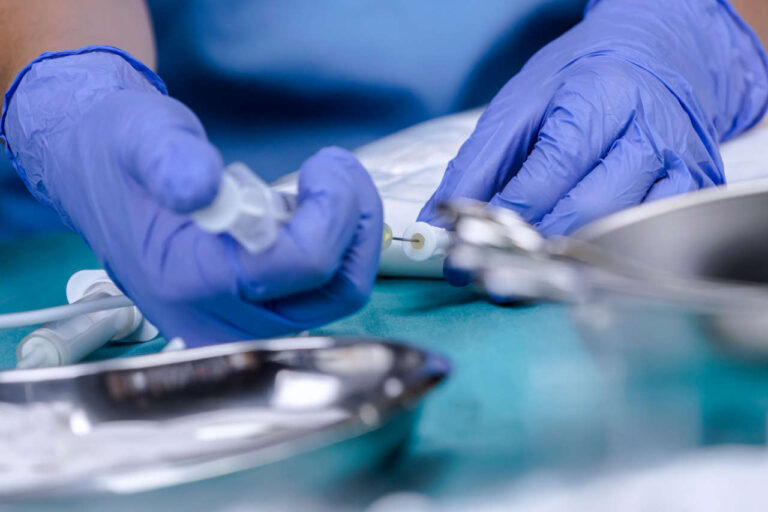
If your TPN (total parenteral nutrition) therapy is expected to last up to several weeks, such as for 2 to 6 weeks, you will likely get a PICC line placed instead of a regular IV line.
Your IV Fluids, Always Available
Full inventory, hassle-free accessA PICC line, also known as a peripherally inserted central catheter, is a long, super thin, flexible tube (catheter) that is inserted into one of the peripheral veins (such as the basilic or cephalic vein) of your upper arm. The tube is then advanced through a larger blood vessel that leads to your heart, such as the subclavian vein or superior vena cava, typically present just above the right side of your heart.
The PICC line placement procedure is mainly done by a registered nurse or physician assistant using a sterile technique.
Before undergoing TPN treatment through PICC lines, it is important to know why it’s considered a preferred choice for TPN infusion, how it is placed, and what risks or complications you can expect during TPN or after TPN infusion.
Why Is the PICC Line Used for TPN Therapy Instead of Regular IVs or Other Central Lines?
There are a number of reasons that healthcare providers consider providing TPN infusion through a PICC line instead of regular intravenous lines or central lines:
It Provides Long-Term Access
The PICC line is designed in such a way that it can stay in place for several weeks or even months. This long-term access makes it easier for patients to receive TPN therapy for up to a few months without frequent reinsertion.
Furthermore, unlike a regular intravenous (IV) line, which is shorter, the PICC line is a super thin, long tube that provides easy access to the larger vein near the heart.
It Reduces Discomfort
The PICC line reduces the discomfort caused by repeated needle sticks with general IV lines and can deliver large amounts of IV fluids, which might not be possible through regular IV lines.
It Minimizes the Risk of Infections
PICC lines are considered safe and cost-effective because they have a lower infection risk than other central lines and regular IV lines.
How Is TPN Given Through the PICC Line?
To provide TPN infusion through a PICC line, the healthcare provider will first place a PICC line.
PICC Line Placement Procedure

The PICC line insertion procedure takes about an hour and is typically done in a general room equipped with imaging technology, such as X-ray machines. To insert a PICC line, a healthcare provider will do the following steps:
- Clean the insertion site and inject the numbing agent, such as 1% lidocaine, at the insertion site in your upper arm. The numbing agent reduces the pain and discomfort during incision.
- Once the numbing agent is injected, the doctor will carefully make a small incision to access the vein and put the PICC line into the vein.
- The PICC line is gently threaded into the vessels and advanced toward the heart using an ultrasound.
- A chest X-ray will be performed to ensure the PICC line is correctly positioned.
- Once the line is confirmed with an X-ray, your doctor will then secure the line with a bandage or stitches.
- The two or three tubes sticking out of your skin, called lumens, will be used to deliver TPN solution to your body.
Infusion of TPN Through PICC Line
Once the insertion is successfully completed, your doctor will start the TPN infusion procedure. To learn how to start the TPN infusion process, read our article: A Complete Step-by-Step Guide To Administering TPN.
Ask About TPN Home Infusion
How Do You Care for and Maintain Your PICC Line After the TPN Infusion?
Once your TPN infusion process is complete, you need to secure and maintain the line carefully.
- Always flush and lock the PICC line with saline and heparin solution after TPN infusion. Your healthcare provider or nurse will give you directions about cleaning and flushing the line weekly to prevent blockage.
- Check your insertion site daily for signs of infection, swelling, or redness. If you see redness or feel pain around the insertion site, consult your healthcare provider immediately.
- Avoid lifting heavy weights, as doing so can affect your line.
- Do not use the affected arm to check blood pressure.
- Cover your PICC line with plastic wrap or waterproof bandage when taking a shower.
- Do not change the dressing of your PICC line by yourself; instead, ask your nurse or trained caregiver to put the dressing over it.
Are There Any Risks Associated With TPN Given Through a PICC Line?
No particular risks are associated with TPN given through a PICC line compared to other modes of TPN delivery, as long as the line is secured and maintained properly. However, the PICC line can sometimes become clogged with medication or blood clots if not flushed properly with saline and heparin solution after the TPN infusion.
If the line gets clogged, the TPN fluid may not flow smoothly. This requires the removal and replacement of the line with a new PICC line.
When To Consult Your Healthcare Provider
Consult your healthcare provider immediately if:
- You have a high fever or experience shortness of breath, itching, or dizziness.
- Your line won’t flush or is blocked.
- Your PICC line is leaking.
- You have bleeding from the PICC line site.
- Your PICC line accidentally comes out.
- Your PICC line dressing becomes loose or dirty.
REFERENCES:
- Johansson, E., Hammarskjöld, F., Lundberg, D., & Arnlind, M. H. (2013). Advantages and disadvantages of peripherally inserted central venous catheters (PICC) compared to other central venous lines: a systematic review of the literature. Acta oncologica, 52(5), 886-892. https://doi.org/10.3109/0284186X.2013.773072
- Comas, M., Domingo, L., Jansana, A., Lafuente, E., Civit, A., García-Pérez, L., … & Castells, X. (2022). Cost-effectiveness analysis of peripherally inserted central catheters versus central venous catheters for in-hospital parenteral nutrition. Journal of Patient Safety, 18(7), e1109-e1115. DOI: 10.1097/PTS.0000000000001028












